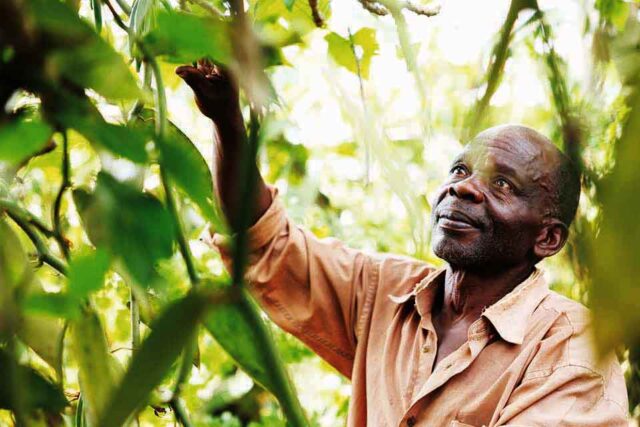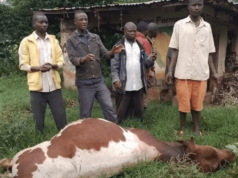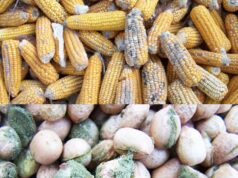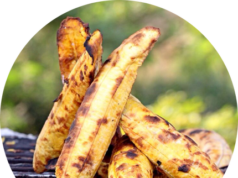By Beatrice Nakibuuka
Vanilla is a very popular flavour and ingredient coveted by chefs, ice cream and chocolate makers, cosmetics, breweries and bakers.
Baked foods, such as cookies, brownies and cakes always have a vanilla flavour too. Due to its large demand, the crop is highly valued.
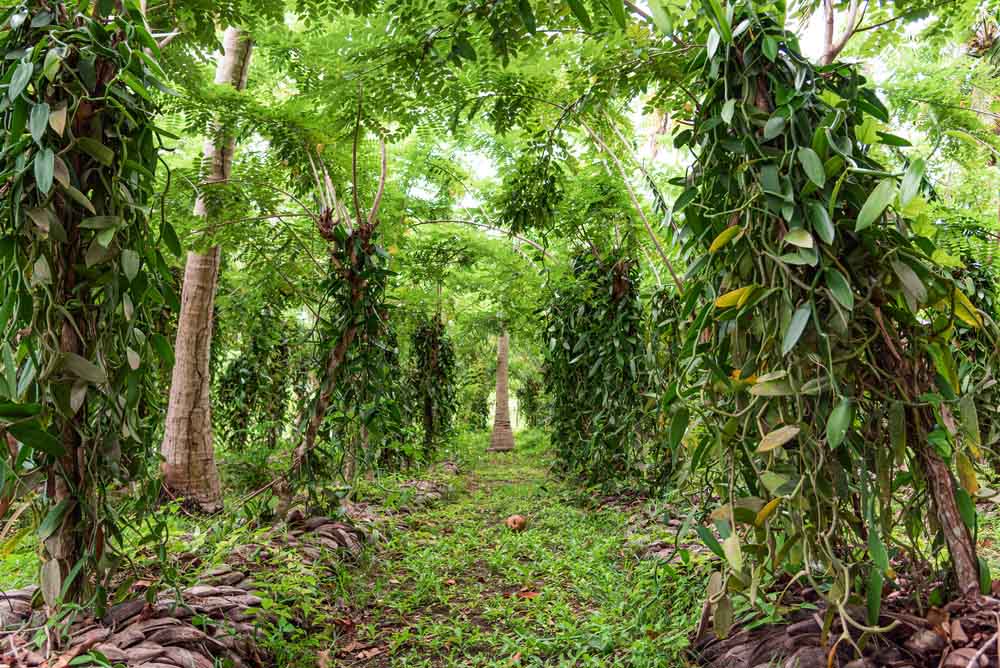
How to grow
Vanilla grows best in warm temperatures. Cooler temperature slows down its growth.
After planting, your vanilla will need about three years to reach maturity, according to Edwin Kakaire, a vanilla grower at Flawless Consultants Limited.
“Frequently called the green gold from the pearl of Africa, Ugandan vanilla beans are a superb expansion to the rest of the world’s most adored flavour. Uganda has come to be known for creating great vanilla beans,” Kakaire says.
Vanilla orchids in Uganda, much like those cultivated in other regions, take about three years to reach maturity. Once they are pollinated, it is typically somewhere around eight or nine months before the vanilla beans are ready to harvest.
Vanilla growing was first introduced in Uganda in the 1940s by British farmers.
Unlike other vanilla-growing regions, vanilla grown in Uganda can be harvested twice a year- in December and in June due to the country’s distinct weather patterns.
When cutting the bind, the farmer should ensure that the line is healthy and free of disease. After that, they need to choose a tudor tree so the vines can grow from and climb up.
Another important thing a farmer should note is: vanilla does not grow in the soil. It grows on top of the soil. Do not plant vanilla below the soil.
You need to prepare the soil before planting the vanilla vine. Remove all the weeds, clear the soil surface and dig a little pearl.
When planting, the point where the leaves connect to the vine (budding area) should point up while the other end down.
After that, you must cover the vine with dry leaves and break them into smaller pieces. Leave the two tips of the vine uncovered. This way, microbes will not get into the vine and it will not rot.
Vanilla vines grow 30-50 feet tall, supported by a host tree (tudor) because it is a creeping plant.
The vanilla bean has very specific sun and shade requirements that benefit the environment – especially in places like Uganda, where the forest has been decimated.
Kakaire says the vanilla plant is an orchid, meaning it will climb other trees usually up to the top. “If the tree is 30-to-40 meters tall, a vanilla vine will grow to the very top of that tree.
“If you allow the vanilla plant to climb to the top, then you will not be able to get it down,” he says.
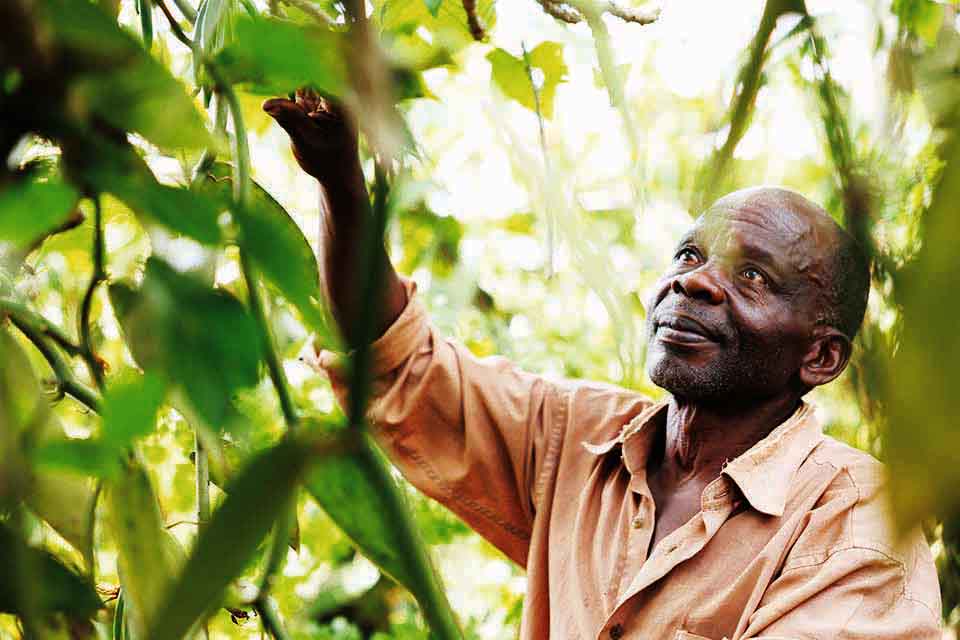
Pollination
Only the melipona bee, found in Central America, can pollinate vanilla.
In Uganda, humans replicate the process by hand using a needle. The bean produces the flower for only one day.
“It is important to note that vanilla-pollinating bees are too few and far between to be of much use. So, Ugandan vanilla is hand-pollinated,” Kakaire says.
The beans are best picked when the ends become slightly yellow and split. They go through blanching, sweating and storing processes.
Vanilla beans are hand-picked and then cured, wrapped, and dried in a process that can take between two and six months, depending on the weather.

The market
“Though risky due to diseases like black rot, vanilla is very addictive. Once you try it out, you may never leave it because there are good years when you earn pretty good money,” Kakaire says.
A kilogram of vanilla costs between USD5.63 (Shs21,000)and 7.52 (Shs28,000) per kilogram.
Over the years, vanilla export recorded a significant increase in Uganda after it surpassed the Shs16b annual average earning in 2022 for the first time in 10 years.
According to the latest data by the Bank of Uganda, vanilla export earned the country Shs14.9b by the end of December 2022.
This indicates a massive growth from just Shs13.18b earned in the same period in 2021 and previous years.
Grading
The commonest vanilla grades are Grade A Prime Gourmet, which is about 30 per cent moisture, and Grade B extract, which is about 20 per cent extract moisture.
Grade A is used for cooking and can be used for making extracts. Grade B, on the other hand, is used for making vanilla extracts.
This grade is usually too dry to scrape the caviar out, although you might be able to do so with some beans.
Difference
Bourbon-style vanilla pods from Uganda are significantly different from Madagascar vanilla beans because they are quite supple with a dark brown to black appearance, usually a bit heavier than Madagascar.
















